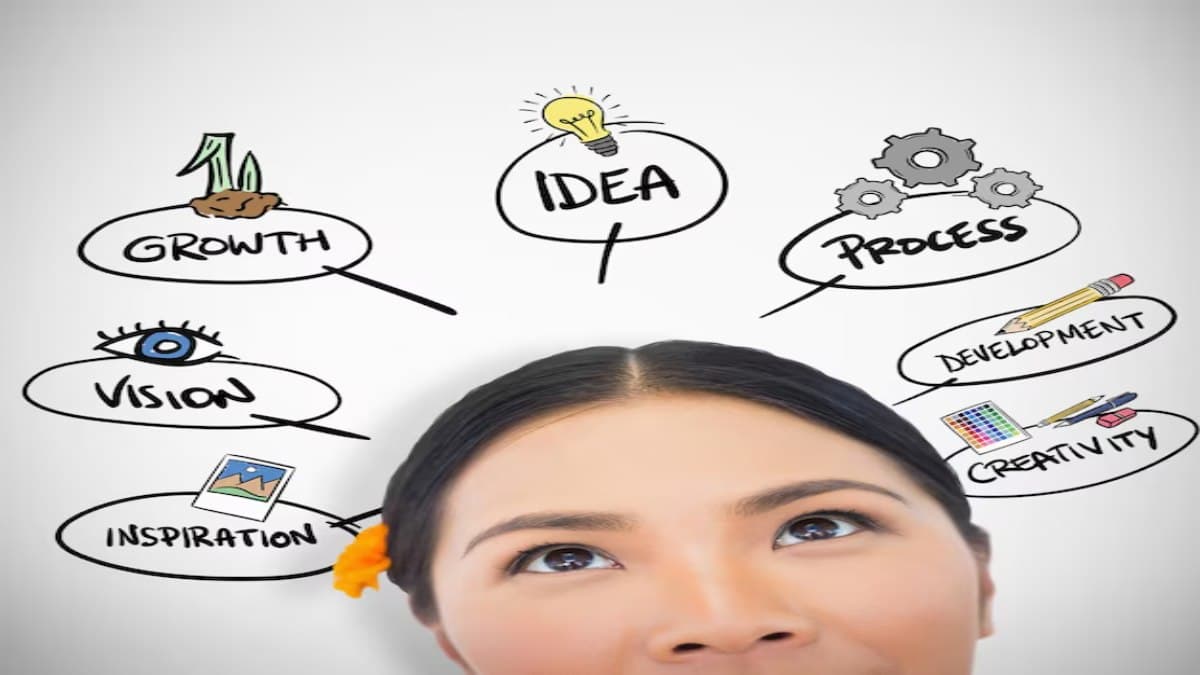The Role of Mind Maps in Studying: Visual Tools to Improve Understanding and Recall

Hello, young scholars! Are you worried that after studying, you will not be able to remember any of what you have studied, or that something will seem incomprehensible? Well, there may be a somewhat interesting but effective way of approaching your study material. Allow me to introduce you to the world of mind maps, which are mighty tools that will change your whole approach towards your study material. Within this blog, we will talk about what a mind map is, its derived benefits, and how you can make use of mind mapping techniques to enhance your comprehension and memory. Ready to let studying be as easy as pie? Let's dive in!
What is a Mind Map?
1. Mind Map Meaning
A mind map is a diagram used to represent information visually and to help organize or connect ideas. It is centered on one key concept which branches out into related topics, thus taking on a map-like form. Mind maps use colors, images, and keywords hence information will be delivered more understandably and memorably.
2. Examples of Mind Maps
But to put that in concrete terms, consider one might develop a mind map around some history lesson or topic. One would center "Ancient Egypt" and then branch into "Pyramids," "Pharaohs," and "Daily Life." Of course, each of those branches could have sub-branches, like "Construction Techniques" or "Hieroglyphics," which work to break down complex ideas.
Why Use Mind Maps for Studying?
1. Improves Understanding
Mind mapping techniques allow you to break down complex topics into simpler components. Having a diagram of how ideas relate to one another helps to clarify the material for you visually. This then makes it easier to grasp how several concepts relate to one another.
2. Improves Recall
Aids like mind maps ensure very good enhancement in the recalling of memory. Because of the nature of the visual presentation and also the colors and images used, this method presents information in an appealing way to remember the details far more effectively than the traditional style of note-taking does.
3. Improves Creativity
A mind map is a method of keeping track of information while being creative all at the same time. With the independence that comes with being able to use different colors, images, and styles, one can think out of the box and have some fun with ideas in an innovative manner.
4. Aids in Planning and Organization
Mind maps are not only used for studying, but they are effective in the planning of projects, brainstorming of ideas, and in organizing tasks. Due to the clarity in structure, the overview comes into view and big tasks can be subdivided into smaller and more feasible steps.
How to Create an Effective Mind Map
1. Start with a Central Idea
What to Include
First, write the main topic or concept in the center of your page. This is going to be the very core from which all your other branches extend. If you are studying biology, then your central idea might be "Cell Structure."
Visual Presentation
Let the central idea be prepared with a keyword or just a simple image. The visual component will make remembering and relating easier.
2. Create Branches for Main Topics
Branching Off
Draw lines from the center to form branches for the main topics or categories of your subject. Each of the endings should be labeled with a keyword or idea. Examples of "Cell Structure" would include "Cell Membrane," "Nucleus," and "Cytoplasm."
Mind Map Pictures
Use images of mind maps or icons to provide a visual distinction between each branch. Images can be excellent memory cues and may help to make the material far easier to learn and remember.
3. Add Sub-Branches for Detail
Depth
Off each of your major branches, you are going to add sub-branches that give you greater detail. For example, for "Cell Membrane," you would add in sub-branches such as "Phospholipid Bilayer," "Proteins," and "Fluid Mosaic Model."
Creative Mind Map Ideas
Be creative in the way you depict information, use a different color for each of the branches off of the center, add doodles or symbols, and experiment with shapes and font sizes/styles to make your creative mind map interesting and memorable.
4. Use Keywords and Short Phrases
Simplify Information
Instead of writing complete sentences, keywords and phrases can be used to bring out the important information on the map. For example, instead of "The powerhouse of the cell is called the mitochondria," just have it as "Mitochondria."
Ideas for Students' Mind Mapping
Use color-coded keywords or symbols to highlight main terms or concepts. In this way, you will be able to review material much more quickly and study more productively.
5. Review and Revise
Regular Updates
Regularly go over your mind map to help solidify learning. Make active updates as you learn more or when you need to shift your study focus. This constant updating reinforces your learning and memory.
Visual Learning Style
If you are a visual learner this frequent return to the mind map will serve you well, the graphic nature of the map will in turn help to reinforce learning through your preferred learning modality.

Mind Mapping Techniques that helps in Forging Character Through Values and Ethics
1. Radiant Thinking
This is an exercise whereby you initiate an idea from the center and then create branches in all directions. The idea here is to research all aspects of a subject, as well as find what types of relationships exist among various concepts involved.
2. Hierarchical Structure
In the hierarchical structure, you start with the central idea and work your way into building a network into main topics, subdividing those into minor subtopics. This is helpful for note-taking and for setting up complicated information in order.
3. Color Coding
The use of various colored branches and sub-branches adds visual appeal but can also be used to highlight different themes. Color coding makes it easy to commit to memory and to identify the main ideas rapidly.
4. Adding Images
By adding images or icons to your mind map, it might become more interactive and, therefore, more memorable. These visual elements might serve as a memory trigger later and lighten up the material.
5. Interactive Mind Maps
Coming up with some digital tools that would make interactive mind maps possibly might be a good idea to contemplate. Most of the applications and software provide options like adding links, multimedia, and collaborative options to make learning more dynamic.
Mind Map Ideas for Students
1. Study Guides
Make mind maps for each subject or topic you are covering. For instance, you might make a mind map for "The Scientific Method" that has a branch for each of the different steps in the process, with sub-branches for examples or key points.
2. Project Planning
Plan school projects using mind maps, by putting the aim of the project in the middle and creating from there branches leading to tasks, resources, and due dates. This keeps you organized about where you are regarding the progress of the project.
3. Essay Outlines
Create a mind map in advance of writing an essay, outlining what the key points are and the arguments supporting them. It will organize your ideas and make sure you have dealt with every vital point.
4. Revision Notes
Instead of conventional revision notes, use mind maps. For each topic, you will draw a mind map that summarizes the main concepts and how they relate to one another, so you can study them more easily before an exam.
5. Brainstorming Sessions
While brainstorming on any creative project or ideas, use mind maps to see the various possibilities and relationships. This visual approach could be instrumental in the generation and organization of ideas effectively.
Conclusion
Mind maps are one good way to build upon comprehension and memory by allowing students to take a more interesting and interactive approach to study. Understand what a mind map is and understand how to apply mind-mapping techniques to produce these graphical learning devices to help your learning. Whether complex subject matter, project planning, or even simple effective organization of thoughts can be facilitated through a mind map, which will display information in a very candid and artistic manner.
Just try to include in your studying habits examples of mind maps and ideas of mind mapping for students, and see how they will change the way you used to study so far. Don't hold anything back in visual learning and let mind maps take you to a place where no other academic success with less stress and more fun has taken you before.
Happy mind mapping, and good luck with your studies!
FAQs
1. How does a mind map use visual memory skills?
Mind maps are a visual way of recording your ideas or another means by which you try to capture your thinking. You can use mind maps right throughout your university career. Mind maps use words and images to make strong associations that make it possible to recall what you are studying. For some, mind mapping provides a more 'natural' method of note-taking.
2. How can using a mind map be helpful in your learning?
Mind mapping has become a resource in educational circles, providing the learner with the opportunity to reinforce knowledge by constructing links between areas and expanding on an area.
3. What is the role of mind mapping?
Mind maps offer a way of gathering and structuring ideas and information. They also help users break down concepts into their parts to understand them better. The technique is applied in the production of new ideas or in the breaking down and better understanding of the existing information.
We hope you liked the above article. Please do not forget to share this blog with your friends and community members to spread awareness of "The Role of Mind Maps in Studying”
Other Related Sections
NCERT Solutions | Sample Papers | CBSE SYLLABUS| Calculators | Converters | Stories For Kids | Poems for kids | Practice Worksheets | Formulas I Blogs
Admissions Open for
CBSE Schools In Popular Cities
- CBSE Schools in Bangalore
- CBSE Schools in Mumbai
- CBSE Schools in Pune
- CBSE Schools in Hyderabad
- CBSE Schools in Chennai
- CBSE Schools in Gurgaon
- CBSE Schools in Kolkata
- CBSE Schools in Indore
- CBSE Schools in Sonipat
- CBSE Schools in Delhi
- CBSE Schools in Rohtak
- CBSE Schools in Bhopal
- CBSE Schools in Aurangabad
- CBSE Schools in Jabalpur
- CBSE Schools in Jaipur
- CBSE Schools in Jodhpur
- CBSE Schools in Nagpur
- CBSE Schools in Ahmednagar
- CBSE School In Tumkur











